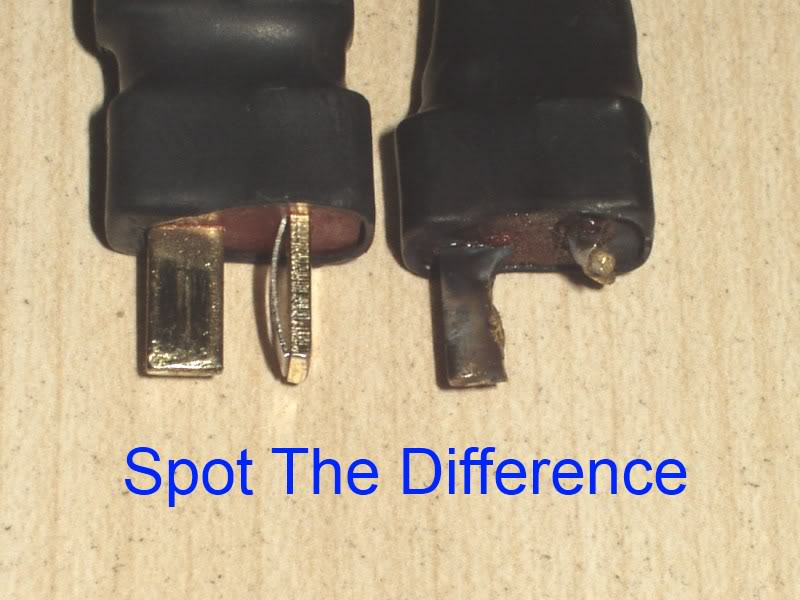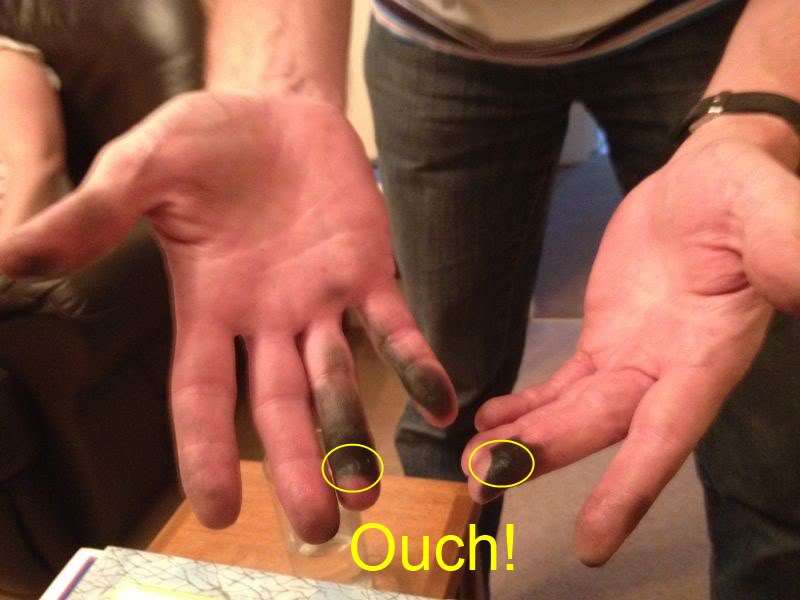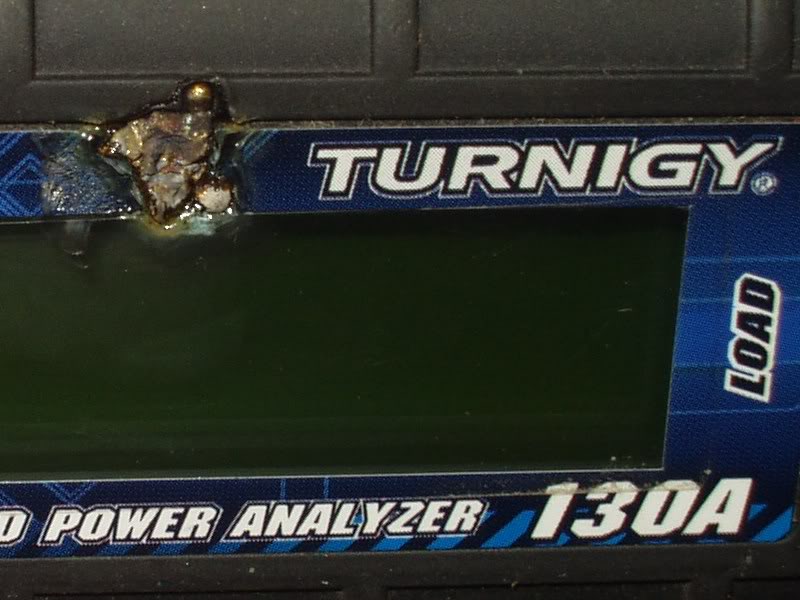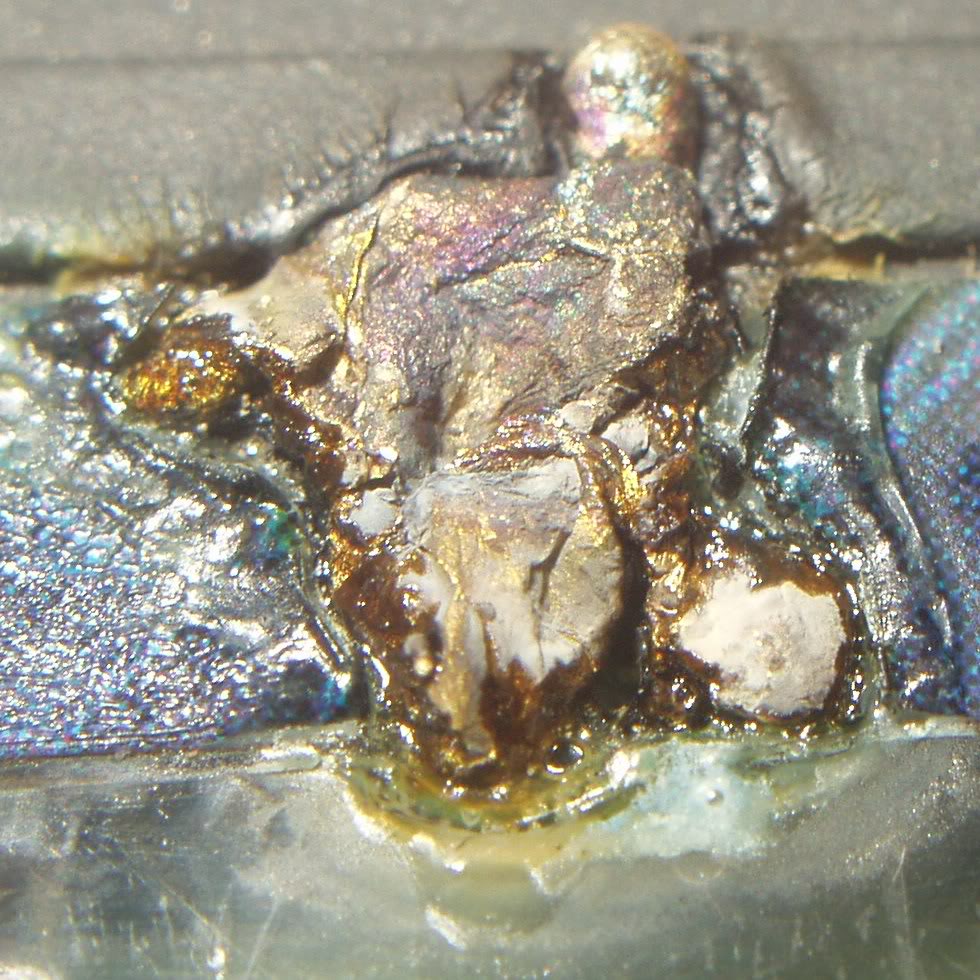Dennis, the arcing at the switch contacts is usually caused by the initial current surge as the capacitors are instantly charged up to equal the battery voltage when the battery is initially connected. Disconnect it for at least 5 seconds and the same big spark occurs each time you reconnect.
As an experiment, I tried connecting an old controller which has the FETs disconnected and the spark was just the same as it is on my current controller on the bike, so I would definitely say that the capacitor charging is responsible for the initial spark.
The spark is also a lot bigger on 48V than it is on 24V.
Anyway, I decided I would try and capture the spark on video to show exactly what happens each time you throw the switch, but it was very difficult to see using a male and female pair of Deans type connectors.
I thought it would be easier to see the spark if it wasn't happening inside the connector, so I connected a home made gender changer to the female socket so I could simply touch the two male terminals together leaving the spark nice and visible.

Even though I was steadying the two connectors very carefully with both hands, I still managed to somehow touch them together in the wrong position and must have shorted out the battery side connector for just a split second, which resulted in a nice big loud spark causing an enormous amount of heat which instantly vaporised the copper contacts!
The battery side connector was not too badly damaged and is still usable, but the following picture shows what remains of the male connector coming from the controller:

And this is what happened to my hands that were holding the connectors nice and steady:

The molten blob of copper decide to embed itself into my watt meter:

And this is all that remains of the missing bits of the copper connectors:

Unfortunately this was just the trial run, so the video was not running.

In previous experiments, I found that connecting a 360ohm 1/4 watt resistor for a couple of seconds was enough to charge the capacitors in the controller and eliminate any sparking when the main connection was made.
This worked fine as long as you connected the main connection before you tried using the throttle, as failing to do so would result in the poor little resistor being fried.

A simple solution for batteries with a keyswitch would be to have a momentary push button and resistor connected across the switch contacts so that you could simply press and hold the button for a second or two to pre-charge the capacitors in the controller before turning on the keyswitch.
The ideal solution would be an automatic pre-charge system incorporated into the controller itself to eliminate the possibility of user error or abuse.
Regarding the 5V external supply, I don't honestly think this would make any difference, as I'm pretty sure the controller uses a 12V supply for switching the FETs gate connections.
When I've played with these FETs in the past, I found that they would only allow current flow between the source and drain connections when the gate voltage was reasonably high.
Alan